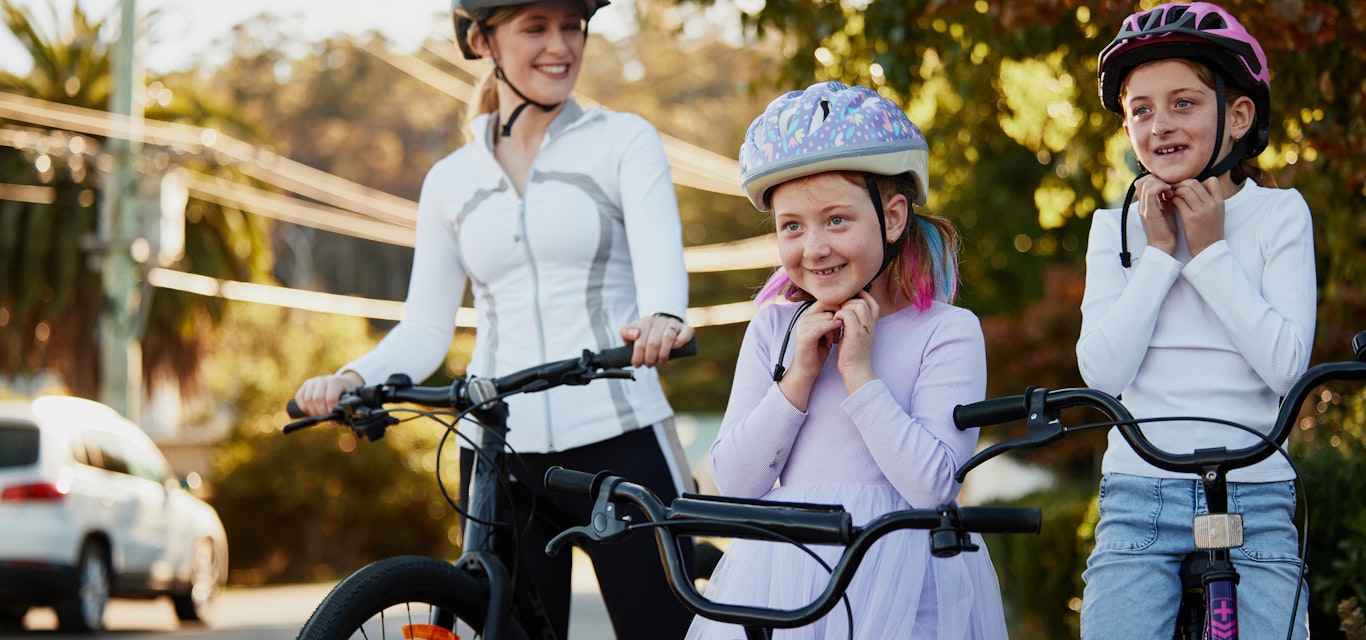But, there are lots around and they come in many shapes and sizes. How do you know you’re getting the right one?
Here's a few things you'll need to look for.
Does it meet the standard?
All helmets sold in Australia must meet the Australian Safety Standards. If you’re buying locally, you can rest easy knowing that bike stores here can’t sell helmets that don’t meet these. If you want to check, look for the label inside the helmet that tells you it’s certified.
Buying overseas is a different story. So, if you’re buying a helmet online, it’s best to buy from an Australian store. And always check they follow these safety standards.
Does it fit properly?
If a helmet doesn’t fit properly, it won’t protect you or your child. It should sit firmly and comfortably on top of the head. Nice and snug, but not too tight.
The front should be one or two fingers above your eyebrows. The ‘Y’ of the helmet strap should join under your ears and the straps should fit flat against your head. The chin strap should be snug and no more than one finger should be able to fit under it. If your child is shaking their head side to side and the helmet moves, it’s too loose or the wrong fit.
If you’re in a local bike store, ask the staff to help make sure you’ve got the right helmet. For a more comfortable and precise fit, look out for helmets with an adjustor at the back.
What about the quality?
Bike helmets come in two construction styles: in-mold and hard shell. In-mold helmets have a thin outer layer where the plastic shell and shock absorbing foam are created in one piece. They usually cost a bit more than hard shell helmets, which have a thicker outer layer and look similar to round skateboarding helmets.
If you’re buying in Australia, both styles are safe to use. That said, in-mold helmets are generally more durable and perform better when they hit the ground. Another thing to look for is helmets that come with an additional layer of protection called a Multidirectional Impact Protection System (MIPS). They move slightly on impact, which reduces the force of a crash and minimises concussion style injuries.
Will your child wear it?
The design of a child’s helmet may make all the difference. If you let them have a say or you choose a look they love, they’ll be more likely to wear it. They can choose from spots, stripes and unicorn horns these days, which should make it fun and easy to pick.
When should you replace it?
Most helmet manufacturers say you should replace your helmets every three to five years. You should definitely replace your child’s helmet if they grow out of it, if it’s been damaged from a crash or hit, or if any part of the helmet is worn or broken.
After a solid impact, the foam’s ability to absorb shocks will have reduced – even if you drop it on the garage floor. The shell may get cracks you can’t see, so it could be time to buy a new one.
